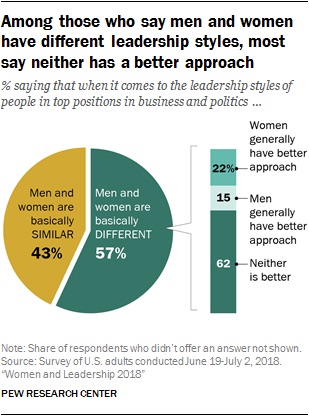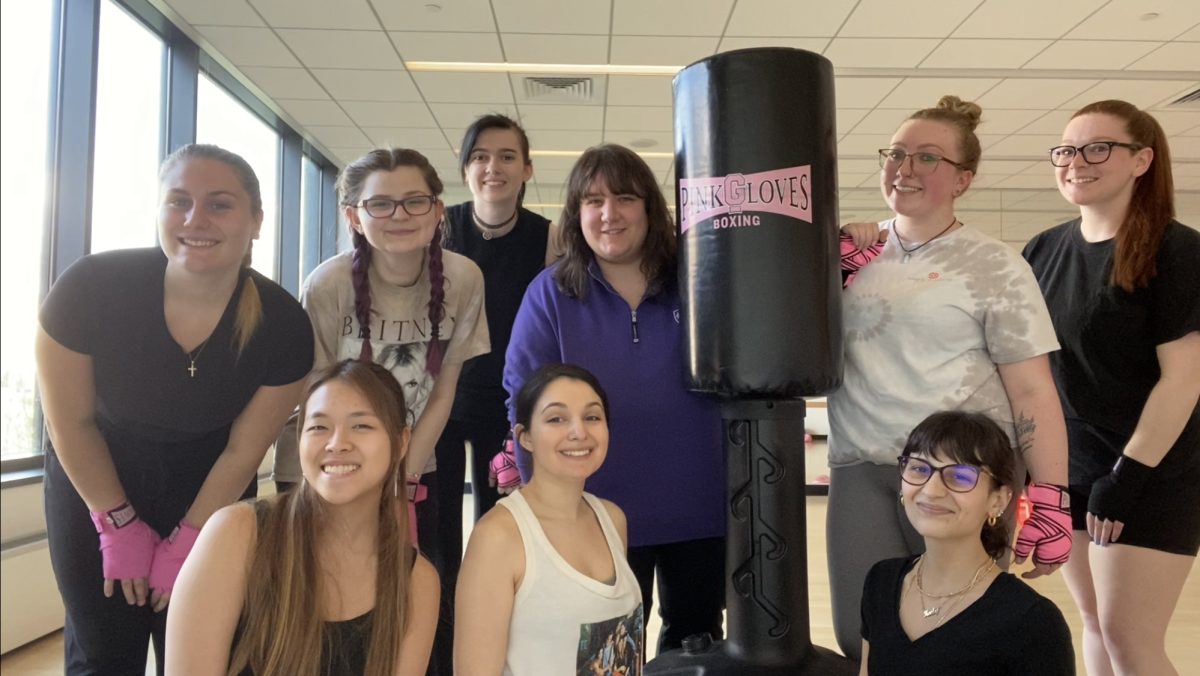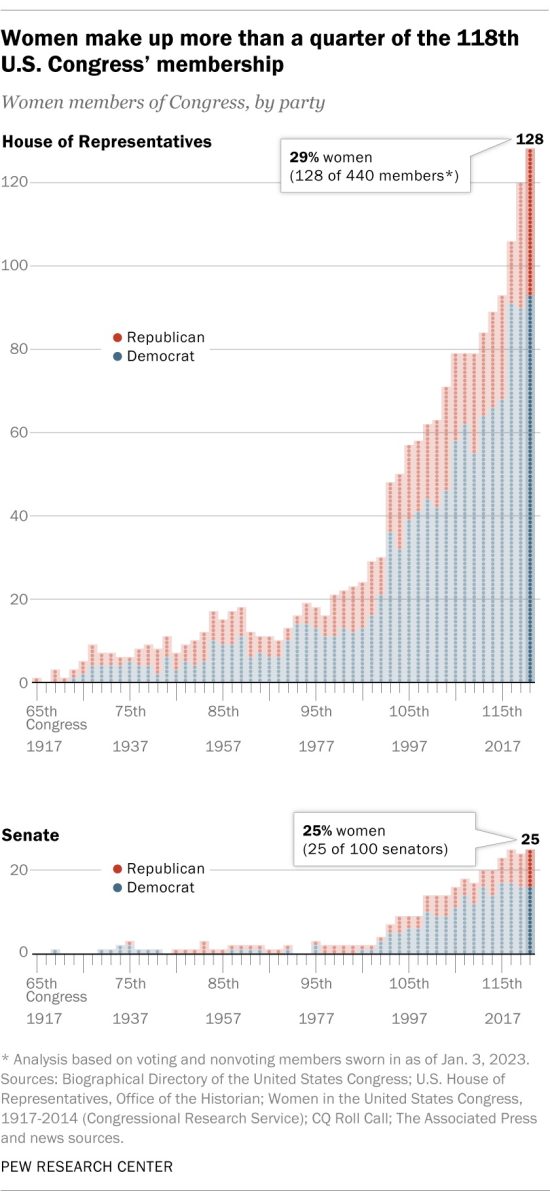As of 2023, women make up 28 percent of congress. This number is seen as a victory compared to the numbers of the past. Twenty-eight percent translates to 128 women and 312 men in the 118th Congress.
In 1916, just over a century ago, Montana Republican Jeannette Rankin served as the first woman elected to congress. In 1973, U.S. Rep. Yvonne Braithwaite, D-CA, became the first woman to give birth while in office.
It was 2016 when Hillary Clinton became the first woman to secure the Democratic nomination for president; she lost to Donald Trump.
As of 2024, the U.S. has never had a female president.
According to a 2018 Pew Research Center study, a majority of all American adults, 59 percent, say there are too few women in high political offices. So why has the addition of women to our political system been such a long and difficult journey?
In the same survey, Americans were also asked why they thought there was such a large gender disparity within leadership. Sixty-seven percent said it was simply easier for men to get elected, many citing that women have to do more to “prove” themselves worthy of a position.
This study also found that “women [are] not being encouraged to be leaders from an early age.” And factors like sexual harassment discourage the women who do get involved, said 56 percent of women and 41 percent of men.
The Pew Center data also found that there is a fear within many groups that women will attain “too much” power and overtake men in political positions. While it’s a small share who say they believe men should keep the majority, the belief is still there as a potential reason many Americans choose to vote against women.
A separate Pew Center survey asked Americans if they thought women and men were equally capable of holding positions of power despite different leadership approaches. While a majority said neither was “better,” 22 percent say women have a better approach while 15 percent say men do.
The study found that Americans generally believe that “In both business and politics…women are better than men when it comes to being compassionate and empathetic, and substantial shares say women are better at working out compromises and standing up for what they believe in.” Sixty-nine percent said female leaders in America would increase their quality of life at least somewhat.

While making up just under 50 percent of the overall U.S. labor force, women make up a majority of the college educated labor force.
There are more educated women than ever before in the U.S. yet women are still not considered proportionately for leadership roles.
Mila Smart Semeshkina, in an article in Forbes titled “Five Reasons Why We Don’t See More Women In Leadership Roles,” reports gender bias as one of the biggest barriers to female leadership. Despite women proving that they are capable, the perception of women as nurturers rather than leaders has allowed them to be ignored in leadership situations. “Men tend to be more assertive and dominant, whereas women tend to be more communal, cooperative and nurturing,” Semeshkina wrote. This bias keeps women from even being considered for promotion within a field.
As well as innate bias, the Forbes article also cites the lack of role models women can look to in leadership positions. When you ask a young girl what she wants to be when she grows up, the options are limited. An article from the Mali Rising Foundation, “What Our Girls Want To Be When They Grow Up…” by Merritt Frey, notes that “girls have been exposed to relatively few career options — they all focus on just a few possible futures.” While this foundation is based in Mali, West Africa, its sentiment is the same for girls in America, as 64 percent of women say the U.S. has not done enough for women equality, according to a Pew Research study.
The National Center for Education Statistics found that 77 percent of public school teachers are female, but 46 percent of public school principals are male, meaning there is a disproportionate amount of men rising to leadership positions. This shows young women that there is no place for growth within even the careers fields they are allowed in.
All of this data points to one central problem: sexism is alive in 2024. While most Americans see a problem with the lack of female leadership, many remain steadfast that power is a man’s thing.
—
Members of the campus community may send opinions to The Wormtown Herald at [email protected]. Opinions run no longer than 800 words. The Wormtown Herald cannot publish all submissions it receives, and opinions will not run anonymously.


























